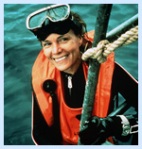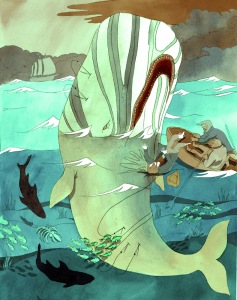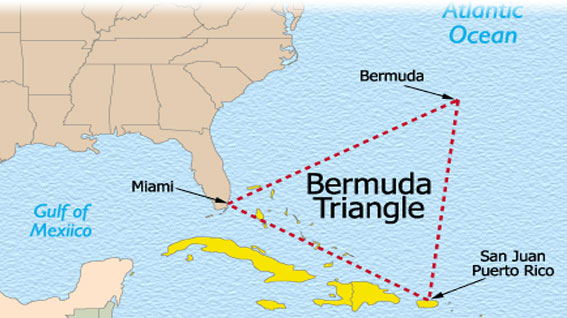 I was watching the October 13, 2009 episode of the Colbert Report on Comedy Central and was pleasantly surprised to when Stephen interviewed Sylvia Earle. Ms. Earle is a very accomplished ocean explorer.
I was watching the October 13, 2009 episode of the Colbert Report on Comedy Central and was pleasantly surprised to when Stephen interviewed Sylvia Earle. Ms. Earle is a very accomplished ocean explorer.
She just put out (yet another – yeah!) book, The World Is Blue: How Our Fate And The Oceans Are One.
So, who is Sylvia Earle? She is just a girl, originally born in New Jersey, and when she was still young moved with her parents to the Gulf of Mexico. There she gravitated to the mystical, open ocean and never looked back. She has more than 125 publication about her ocean explorations, including: Exploring the Deep Frontier, Sea Change (1995), Wild Ocean: America’s Parks Under the Sea (1999) and The Atlas of the Ocean (2001).
Here are some other mighty impressive accomplishments for this 74 year old woman:
- She has been a National Geographic Explorer in Residence since 1998.
- She founded Deep Ocean Exploration and Research (DOER), now DOER Marine Operations, to design, operate, support and consult on manned and robotic sub sea systems.
- She has led more than 50 expeditions worldwide involving in excess of 6,000 hours underwater in connection with her research.
- She led the first team of women aquanauts during the Tektite Project in 1970 and holds a depth record for solo diving.
And, I think this is a very appropriate mantra for the Beach Chair Scientists out there:
I can still feel that leap of enthusiasm, and real joy, at the prospect of finally getting out to the beach, and running around. But probably the most important thing, to me, aside from just the freedom of it and the power of it, was the kind of creatures that you could see along the beach, that you can’t find anywhere else. —Sylvia Earle
If you have any questions please e-mail beachchairscientist@gmail.com or let us know at http://www.beachchairscientist.com.
photo (c) Library of Congress.


 and not as intimidating as people once thought.
and not as intimidating as people once thought.









What people are saying …